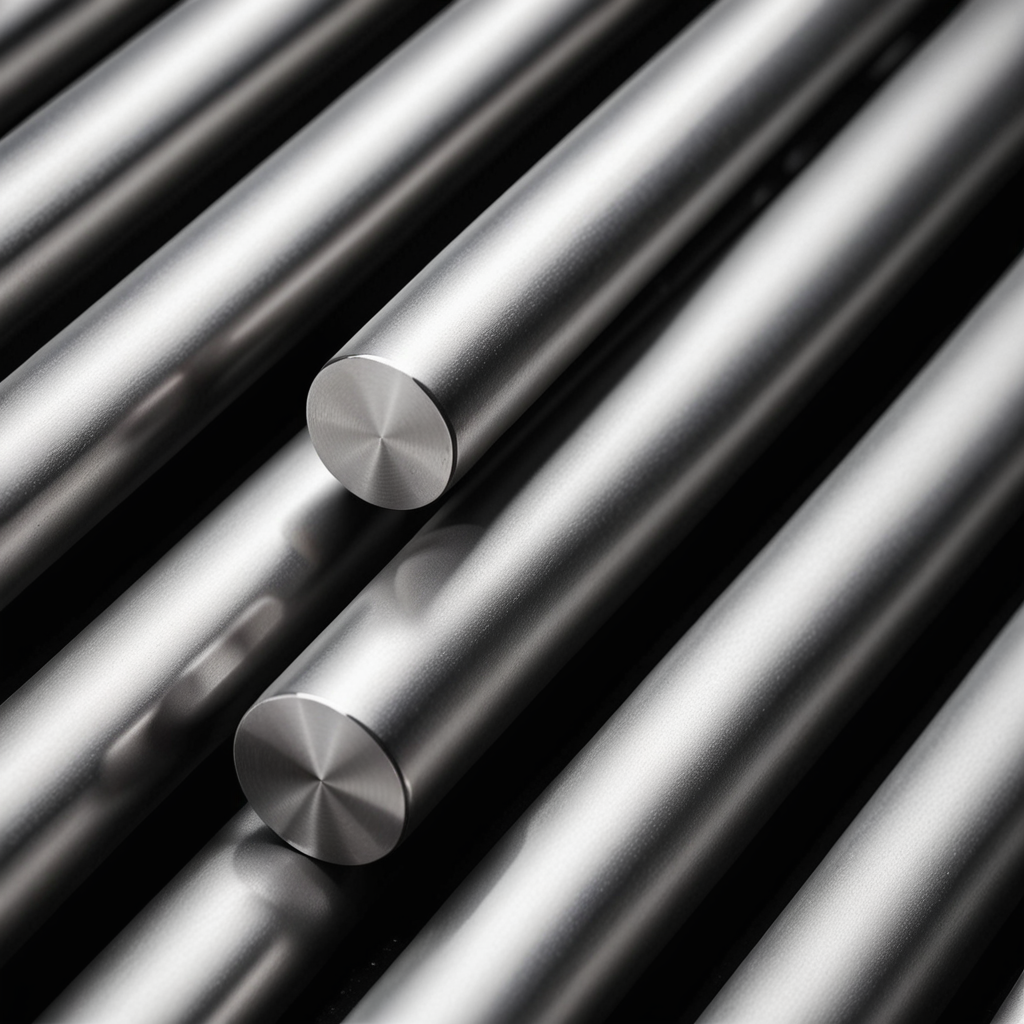Major Factors Affecting the Price of Stainless Steel Bars
When selecting and purchasing stainless steel bars, understanding the key factors that influence their price is crucial. Whether used in manufacturing, machining, or other industrial applications, the price of stainless steel bars is affected by various factors. This article will explore the main factors affecting the price of stainless steel bars and help you make better purchasing decisions.
1. Raw Material Costs
The price of stainless steel bars is primarily influenced by the cost of raw materials. Stainless steel bars are typically made from stainless steel alloys (such as 304, 316, etc.), and the price fluctuations of raw materials—such as chromium, nickel, and molybdenum—directly impact the production costs of stainless steel bars.
For example, the price of nickel greatly affects the cost of stainless steel bars. Stainless steel bars with higher nickel content, such as 316 stainless steel bars, are usually more expensive due to the high cost of nickel.
2. Specifications and Size of Stainless Steel Bars
The size, diameter, length, and custom specifications of stainless steel bars also impact their price. Larger diameters and longer lengths require more materials and more complex production processes, which increases the cost.
For instance, stainless steel bars with custom lengths are typically more expensive than standard lengths due to the additional time and material handling required during production.
3. Alloy Composition of Stainless Steel Bars
The alloy composition of stainless steel bars directly influences both their performance and price. Common stainless steel bar materials, such as 304 stainless steel bars and 316 stainless steel bars, each offer different levels of corrosion resistance and mechanical properties.
316 stainless steel bars contain more nickel and molybdenum, making them more resistant to corrosion in harsh environments, but this higher alloy composition results in a higher price compared to 304 stainless steel bars. Therefore, choosing the appropriate alloy composition is key to controlling costs.
4. Manufacturing Process and Production Techniques
The manufacturing process of stainless steel bars also plays an important role in their price. Precision machining processes, heat treatment, and surface treatments (such as polishing, brushing, sandblasting, etc.) increase production time and costs, thus raising the final price.
For example, high-precision stainless steel bars produced through heat treatment or cold working typically cost more than standard stainless steel bars.
5. Market Demand and Supply Conditions
The supply and demand relationship in the market directly impacts the price of stainless steel bars. As global infrastructure development, manufacturing, and automotive industries grow, the demand for stainless steel bars continues to increase. If there are disruptions in the supply chain or an increase in the price of raw materials, prices will rise accordingly.
Additionally, as environmental protection requirements grow, the cost of environmentally friendly production may also influence the final price of stainless steel bars.
6. Transportation and Logistics Costs
Transportation and logistics costs also affect the price of stainless steel bars. Particularly for bulk orders, transportation costs have a significant impact on the final price. In the global trade environment, differences in transportation fees between regions may lead to price fluctuations.
7. Manufacturers and Brands
Different manufacturers and brands offer stainless steel bars at varying prices. Well-known brands usually offer higher-quality products at a higher price. In contrast, products from smaller manufacturers may have lower prices but may not compare to larger brands in terms of quality and after-sales service.
As a stainless steel bar purchaser, choosing a reliable supplier not only ensures product quality but also helps control costs.
8. Bulk Purchasing and Order Frequency
Bulk purchasing often results in more competitive pricing. Long-term customers often receive discounts or more flexible payment terms. In addition, customers who regularly place orders for stainless steel bars can obtain discounted prices through stable order relationships.
Conclusion
In conclusion, the price of stainless steel bars is influenced by many factors, from raw material costs to manufacturing processes, market demand, and logistics. As a purchaser, understanding these factors and selecting the appropriate stainless steel bars based on actual needs will help you control costs while ensuring product quality.
If you have any questions regarding the price or procurement of stainless steel bars, feel free to contact Tongyi Metal. We offer high-quality 304 and 316 stainless steel bars to meet your various industrial needs, and we provide professional technical support and competitive pricing.







